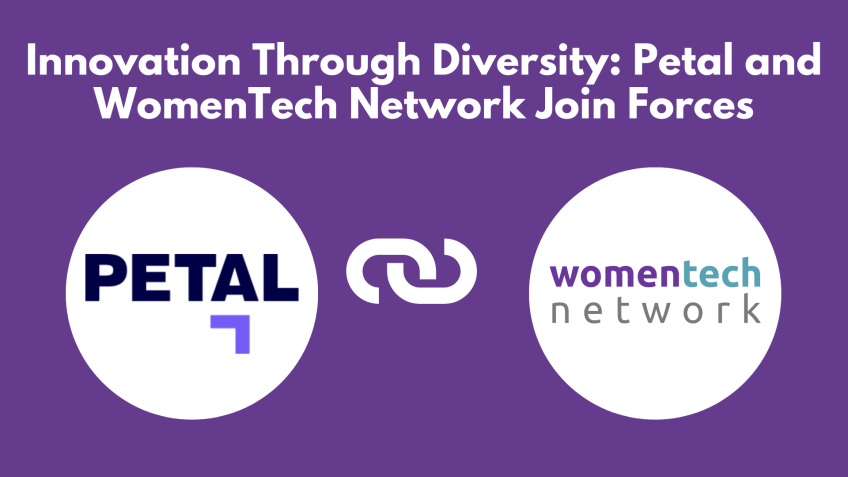Past, Present and Future of Women in Organizations: Factors That Promote and Challenge Gender Equality in IT
Bridging the Gap: Gender Equality in Technology
The conversation regarding gender equality in technology remains topical, as more women enter the field but few scale to leadership positions. This blog post derives from a heartfelt discussion shared by Claudia, a technology expert with over 25 years of experience and a mom of two boys, on gender equality in the tech industry.
A Glance At The Past of Women in Technology
Notably, women have played an active role in the development of technology. A peek into the past exposes how women such as Margaret Hamilton, who crafted the first Artificial Intelligence (AI) process executed by a machine, contribute significantly to technology advancements. Women, astonishingly, made up the first computer science graduation class in Brazil. Still, a paramount question remains: why so few women in tech?
The Advantages of Women in Tech
The inclusion of women in tech boasts numerous advantages, including economic advances, fostering diversity, and enabling companies to adapt rapidly in times of crisis. According to Claudia's references, companies prioritizing diversity realized over 60% in return on sales, while those with divergent boards during the ongoing pandemic manifested adaptable leadership.
The Challenge: Why So Few Women in Tech?
Unfortunately, despite the remarkable advantages, the presence of women in tech is minimal and often drops during mid-career. In Australia, only 23% of women reach senior management positions, while a staggering 8% achieve CEO positions in STEM qualified industries. This in-balance seeps into Brazil, where only 15% of women enroll in STEM graduation courses.
Overcoming Barriers To Women in Tech
To promote gender equality in technology, Claudia suggests that overcoming existing challenges including biases, intimidation about the future, and work-life balance is crucial. She shared key biases such as having to prove competencies, the maternal wall, isolation, and competition with other women.
The Future and Balancing Work-Life
Preparations for the future are often unnoticed and involve perceptions, attitudes, beliefs, and values that only represents a meager 30% of observable behaviors. Claudia recommends establishing a network support, prioritizing tasks, and accepting that perfection is an unrealistic target for balancing work-life.
Moving Forward
Essentially, aiming for gender equality in tech requires fostering knowledge and awareness about biases, cultivating diversity, and constantly seeking transformation. Claudia challenges us to actively promote changes, and engage with companies, societies, and partners in diversifying the tech industry.
Final Thoughts
Claudia leaves us with a poignant thought inspired by Martin Luther King Jr., saying, "Whatever affects one directly affects all indirectly." This perspective remains vital in our quest to deepen the conversation regarding gender equality in tech and aspire to bring more women into the sector.
Note: Claudia provides the 'Top 5 books for understanding gender and diversity' as further resources to help understand gender equality:
- Getting to 50/50 - Sharon Meers and Joanna Strober
- The Confidence Code - Katty Kay and Claire Shipman
- Lean Out - Elissa Shevinsky
- The Secret Thoughts of Successful Women - Valerie Young
- A Life in Balance? - Catherine Hakim
Video Transcription
So it's a, it's a pleasure to be here with all of you. I would like to thank you uh Anna and the women in. Thank you to the opportunity. Um To be honest with you is my first uh congress in English. So I'm so sorry for the accent.I hope that you can understand everything. OK, so what will you do uh talk about today as a taxi level? Uh I think that the question I I always faced was how did you get there? How can I reach leader's position? So uh why do so many of us women drop out along the the tech career path? Why so few women in the segment? That's are good questions aren't OK. This talk is about gender equality in technology. It's a result as a result of my master's study research carried out with women and men. I use it to interview some men in order to get uh different opinions uh about the different ideas about the, the, the OK. And the factors that promoting and challenging gender quality in technology. OK. OK. Let's start. So, first of all, I would like to introduce me, my name is Claudia. Uh I'm a mom of two boys, Gustave and Gabriel. Uh I have more than 2527 years of experience experience in technology. And I was born in a small city here in Brazil and uh there I, I had uh two options of career to be a babysitter or to be a teacher.
In fact, today I, I am both because I'm a very serious of my son and uh I, I'm a teacher as well, but I had a dream to reach a leadership position uh to, to follow a career in a big company here in Brazil. So uh that's why my, my, my history starts. OK. OK. So let's talk about a little bit the past of women impact. OK. Um Before at all, I would like to uh share with you that we have uh a lot of nations in terms of diversity. And here in this talk, I will talk with you about just one of one of their uh that is g gender uh dimension. But we have another uh many kinds of dimensions. Uh When we are talking about a legacy, for example, regarding a ag regarded gender experiential education, job roles are so uh the motion, the intelligence, for example, in this conversa in this conversation, specifically, we will talk about the dimension uh around gender. OK.
So when he uh when we see uh a pregnant, the first question that we used to do here in Brazil at least is, is, is a boy or a girl. And we continued doing this differentiation uh through our entire life. So we started to different uh to, to uh get the difference between women and men uh since the, the childhood. OK. So this picture show us uh the first computer science graduation class here in Brazil. As you can see, uh we have more women than men. So what's happening with us during our, along our career? That's a good question. And we have another uh strong woman uh in the, in the technology as Margaret Ham Hamilton, she wrote the first aig uh to process it by a machine. So we have the, this, this film, this movie is wonderful. Uh I suggest that you can uh try uh to see but uh there are, they are uh uh spacey uh uh mission group composed composed solidly for African American woman. So it's, it's a great movie uh about strong women that uh uh are working with technology. OK. So what's happened with us? Why so few women in tech and what are the advantages of women in tech? So here I, I bring some numbers for you in order to share uh the advantage of uh diversity in companies and in our life as well. OK. 10% of the, the companies just a second. I'm sorry, I'm sorry. OK.
10% of companies uh that prioritize diversity goals have higher, higher event. So we have more money in co that prioritize uh diversity. And for the two higher high return of investment, uh the companies have have uh when uh they prioritize uh diversity and uh plus 6060 point in return on sales. So, uh what we are seeing here are expressive numbers that are guiding the companies to another level in terms of, to find diversity in our, in our teams. OK. And a kind of divers g that we are talking here, do you know the uh the Tupperware history? So, Tupperware uh is a brand as you know uh of a house, wood, house household uh products. Um No, for the line of plastic foods, two star stary uh foods. So in the third years, uh the Tupper uh the owner of the, the, the company uh invented the plastic of the stars, but he didn't know what he was doing. Uh was this kind of uh toper that we are called Topera today. And it was a woman that discovered that uh could put uh colors in the plas kit and could store food and could share with her friends. And uh he leverage the, the level of the company to another uh kind of uh uh of enterprise.
So it's important to, to share here with you that is the most trade of each one women and men that build a good society. So the, the, the innovation history uh about to is uh a case that we can share with our, our uh friends and our uh comps. OK. And at least uh we have uh economic advances. So if we can uh eval the, the, the level of opportunities in workspace regarding women and men, we can increase around 1212 trillion to 12 to 28 trillion to 2025 in our board. So we are talking about uh a better economy, a better teams, more innovative teams and so on. So it's good to understand why diversity, OK. And about diversity, the boards that have diverse during the pandemic period uh uh have more adaptable uh in, in, in, in leadership, OK.
And at least ESG a company uh nowadays is uh a performance of a company nowadays uh is not about uh only the return to the shareholders, but uh also uh by how an organization achieves its environmental, social and good governance objectives. And we have to the un uh 2030 agenda with the uh sustain sustainable development goals and uh with the five goal that is related to the gender equality, to build a better world for all of us. So why so few woman if we have more than 97 million jobs in technology, why so few women in technology? That's the, the big questions of the, this this speech, OK. Challenge. What are our challenge during our uh career? I think that we have a lot of those two to share. But here I bring to you, uh some numbers in different kind kind of countries. OK. In fact, women make up approximately uh in, in USA uh 47 of overall workforce, but they continually under represented in, in stem uh fields. Uh They are only uh 27% and in Australia, only 23 of women ca could reach senior management positions and me 8% could be uh or could uh reach the CEO uh position in stem qualified industries. So it's a few women.
It's a, a sad scenario that we have here and here in Brazil, uh we have only 15 of women in the graduation courses related to STEM and for each STEM professionals that we have only two women. And we can see this in all around office in a meeting in a congress and in a uh the board of the companies as well. OK. Why do we have so few women intact and how uh we can uh overcome this? This is a result of my uh my research that I, I, I've done uh for my master uh thesis. And uh in fact, we have a few beginners, the last beginners then. And we have um a huge uh challenge during the mid career. For example, uh 56 of the women in IC C leave their careers after having between five and 10 years of professional experience, there's a lot of women that are left to the, to the, to the way uh around the the career technology. OK. And leadership is a huge uh challenge that we have a study conducted in Silicon Valley. It's not here, it's not in our another country. It's Silicon Valley, the heart of the technology part that men have 2.7 times higher probability of reaching, of reaching leadership positions in the it sector. If we compared uh with uh a woman to a woman. OK.
And um how can I, I, I see this problem, I can see in a deeply or in a disinterest uh way because uh in fact, uh if you see just a part of the animal, we see not the problem in our uh in our list day in our list uh way. OK. And I, I choose a three key challenge to, to share with you here. Uh The biases, the future and the work life balance. OK. What about the bias? Who is the guilt the man argued about, about the bias I share with you about the key biases that we have in the workplace to prove it again in some time sometimes. And I share uh here in Brazil uh with my, my friends and in many congress that I, I enter in a beach room and I have to prove that I can talk about technology that I can leader uh to be a leadership in technology. And every day I have to prove it again and prove it again. Uh regarding my, my uh competences, my technical skills or my co my soft skills, I have to prove more than math that I'm good in technology. So it's a, a biases that we have is, it's a pre concept that we have and the precepts and the biases are building during our childhood inside our home and, uh with our parents and we have to take attention about uh these biases and to bring to the conscience in order to share with everyone.
And two uh have attention in order to avoid uh the biases and the all types of the biases that we have. The chop that another biases when we compete in different ways with W and mass. Uh and then the maternal war uh when, when is we talk about the 57 56% of uh woman that, that left their care in the middle uh age. We are talking about the maternal age and the challenge that we have to balance uh professional life, um personal life and maternal life that we have. We have a biological uh point that we uh difference, differentiate, differentiate us of the map and we have to deal and to balance all these uh issues that we have in our life. The tug of war, war, sometimes uh we have women competing with another woman and uh we have to uh improve our capacity, capacity to be empathy and to have uh uh a good relationship, a good network with women and with men in order to improve our career and the isolation. Uh Sometimes we are silent in terms of our accomplishments, our uh sties, our projects, success projects that we have. Uh we can isolate. Uh We can uh we need to share, we must share uh with uh the world, the good things that we have.
And uh I think that's a point that women sometimes have to learn. Uh I, I see a lot of women starting some kind of, uh, uh, of speech or during a meeting. Oh, I'm sorry. Uh, but I, I would like to, to give my opinion. Oh, this is more than the case. This is more than, than to be uh polite. I think that we have to, to take care about our, uh, our conversation and our uh model of uh uh managing as well. And Miss Lane, I put a picture here just to share. Let me take your expertise with my, I'm very, very, uh happy to share, uh with you this kind of, uh, biases because, uh, we have, uh uh here in Brazil, uh, and, uh, an ape that counts the number of times that we are interrupted during a meeting by man or, or by another woman.
So it's a point uh, very interesting to, to share with you another uh variable that I shared I shared with you is about the future, the future. I, I use it to say that the future is something that happens during the cough during the lunchtime. It's not observable. So, we have perceptions, attitudes, beliefs and values and we have, um, on another, uh, hand, we have only 30% of, observe, observe of behaviors. So the practices and the behaviors that we show, uh, sometimes it's not the most of our traits, uh, with another women with, uh, another, uh, tips of diverse that we are used to. Ok. OK. So what about the work life balance just to finish? Uh I think that uh it's not an easy answer. How can I improve my work life balance? Uh Being a woman. Iii I bring for you some tips that my personal tips. But I think that you have to uh find your way to, to balance your, your life and your work. Uh I think that is important to have a network support. For example, I have a, a son, my son uh sometimes stays uh at home with my mother in law. Uh I have a good mentoring during my uh my maternity when my son uh was one year old.
I fought to give up of my career and my mentor helps me to find out way to balance the, the work life balance. I have to prioritize the glass and the rubber balls. I, I use it to say that we have two kinds of priorities, the glass balls that we have to get as to uh to get my son at school to participate in some uh school party and something like that and we have the rubber balls. Uh Sometimes I lose weight, sometimes I will learn another uh another kind of uh hard skills. OK. OK. We don't have to be perfect at everything. So I think that's the, the key message that I, I wanted to share with you the importance of woman in tech, technology, in technology, the importance of to know the biases and to, to bring to the, to the mind, the biases in order to avoid them. And at the end, the importance of uh the um the mindset, the mindset that we don't have to, to be perfect uh at everything and put diversity on the table. I I bring to us to us some, some key points, some uh tips uh of uh we have to note the, the biases and all the things that avoid women in technology.
We have to engage another woman, the mayor, uh the company, the partners and the society about the, the top key we have to commit to transform. Uh When I'm here with all of you, I'm committed to transformation. I'm committed to uh to leave the message for how many people a lot of people in order to uh to share the, the, the the the point of view regarding the diversity, we had to activate the changing, we have to accept the change and have plans about uh about the change, I think that it's very important in terms of uh diversity on the, on the companies and on our families and our society as well.
I left it for you or I think for you. Uh The top five books around w woman and uh and men, uh they are uh amazing books so easy to read and with a lot of uh baggage uh around the, the, the, the diversity and the gender equality as well. Uh The first one is about uh it was wrote to the man. So it's, it's, it's too funny. And uh the last one is about the, the meaning of our life as women or as man as, as, as a human. So it's very important to, to know a little bit more about the, the issue and then at the end, whatever affects, one directly affects all indirectly. So uh through the, through the top key, uh know a little bit more about the top key and count on me uh the way uh to help you to, to, to bring more women to technology uh area. Thank you very much.






